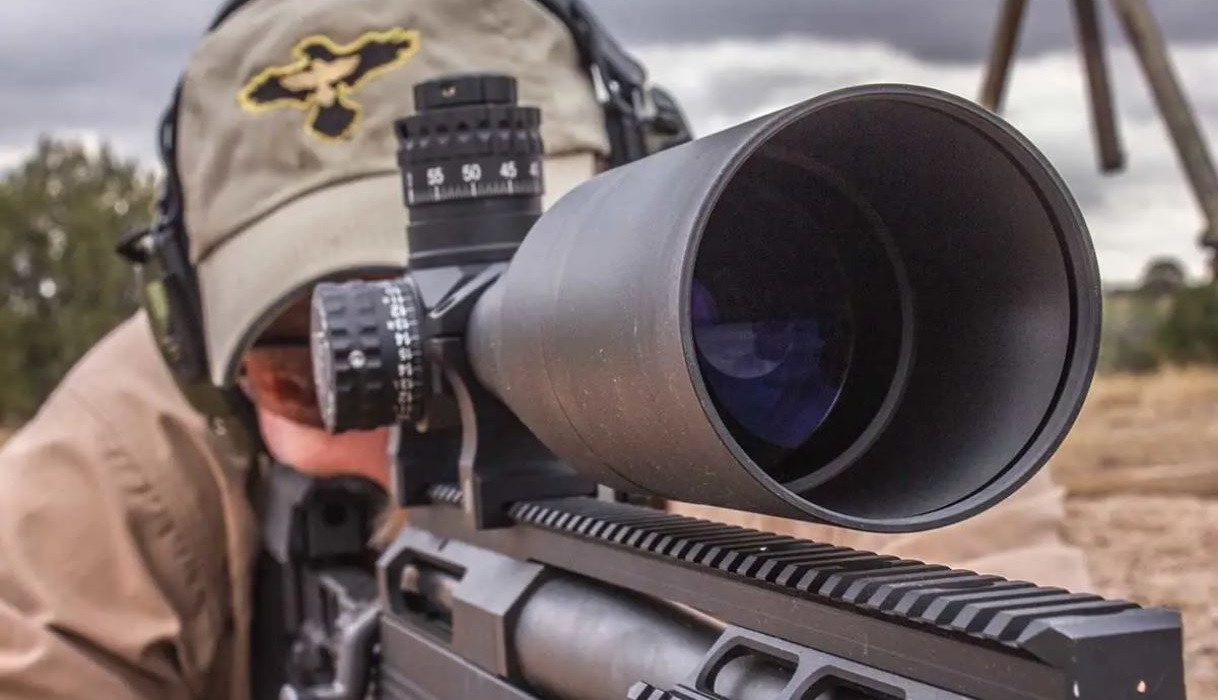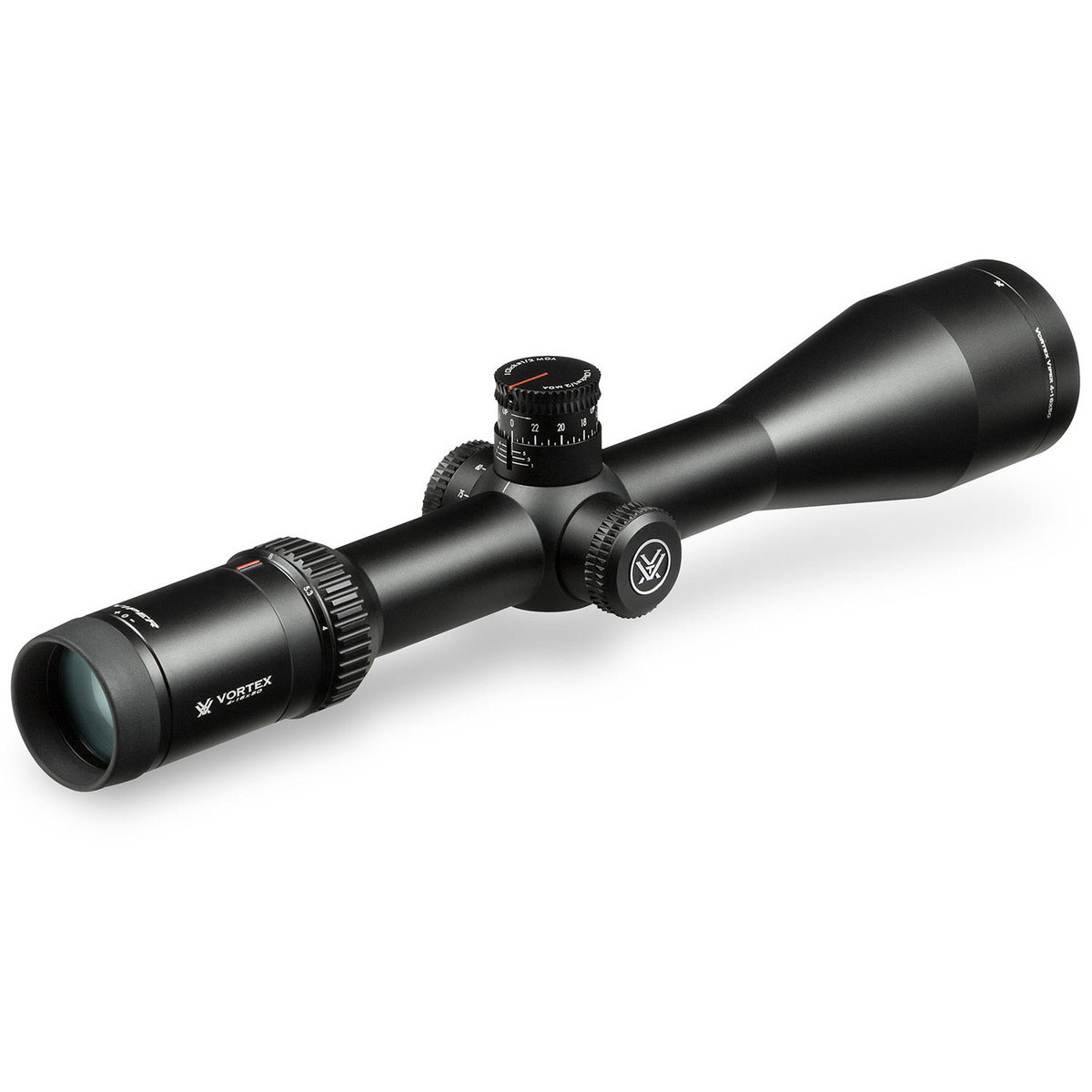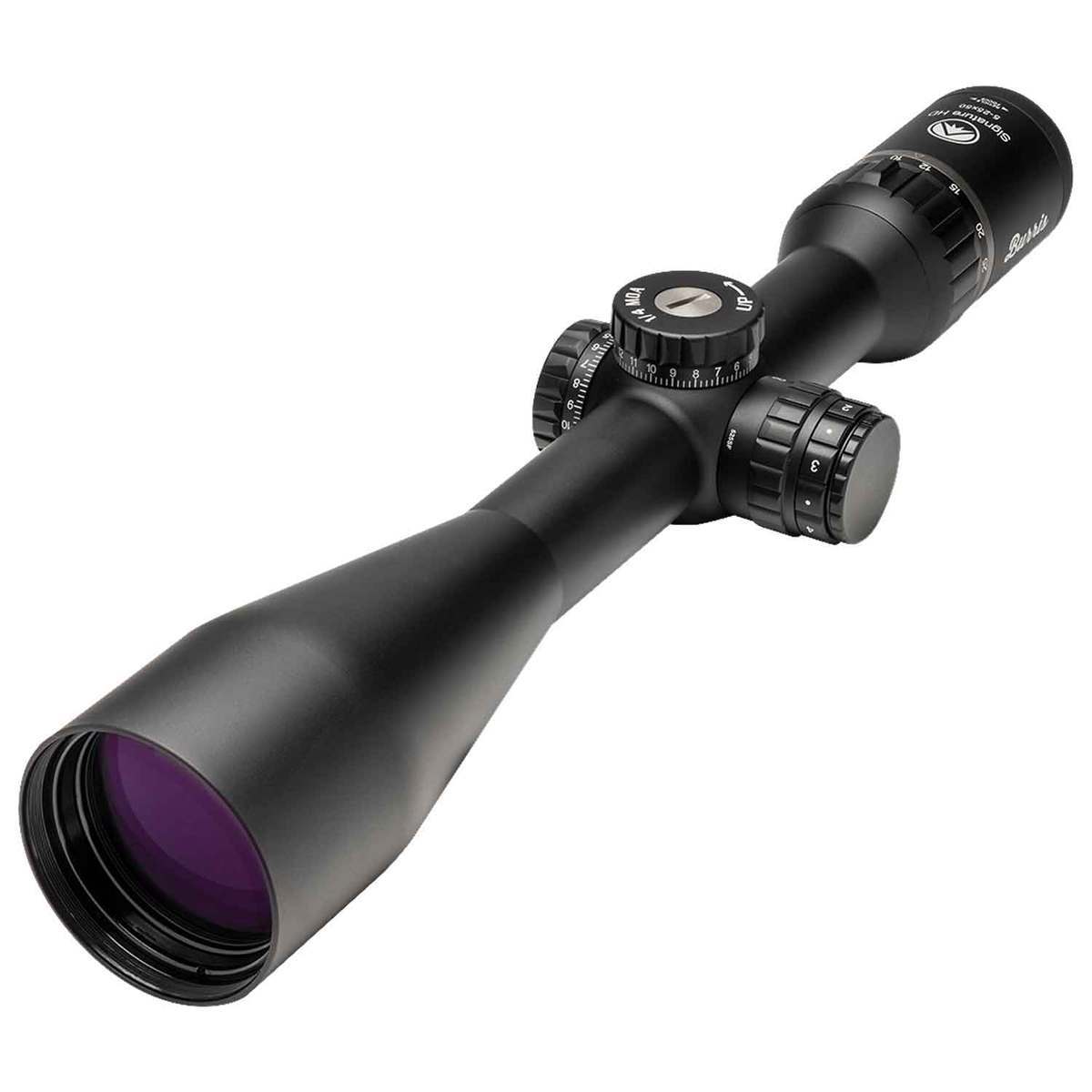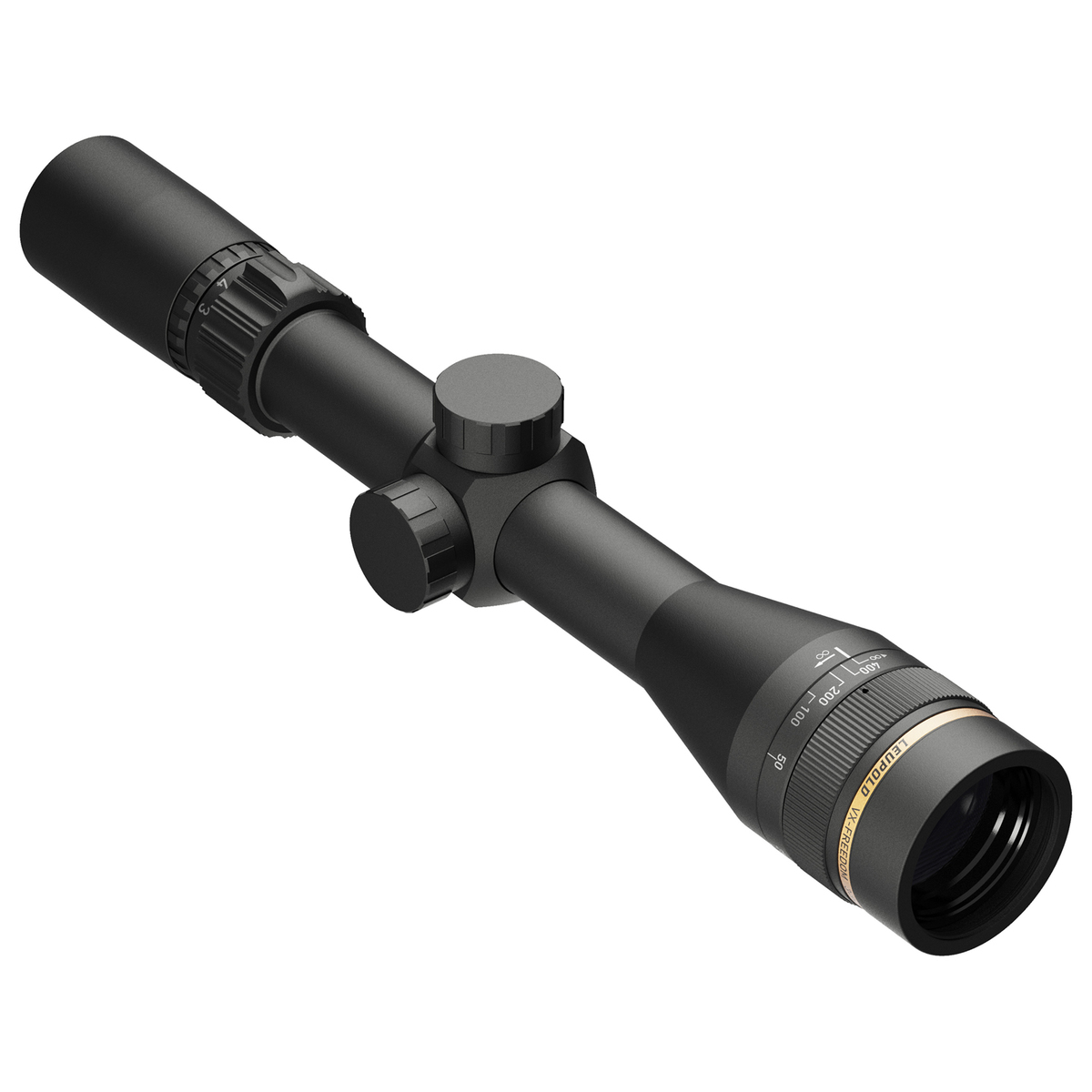OutdoorHub Reporters 11.12.20
Do you know the difference between a first and second focal plane reticle? You should, because if you are buying a new riflescope, both types are now common. It used to be that riflescopes with first focal plane reticles were European made riflescopes. However, with long-range shooting becoming more popular in America, we are now seeing first focal plane riflescopes being offered by most optics manufacturers.
Whether a riflescope has a first or second focal plane reticle only matters if the riflescope is one with variable power. With a first focal plane riflescope (below), the reticle is magnified by the scope. In other words, as you increase the magnification, the reticle is magnified just the same as whatever you’re looking at.
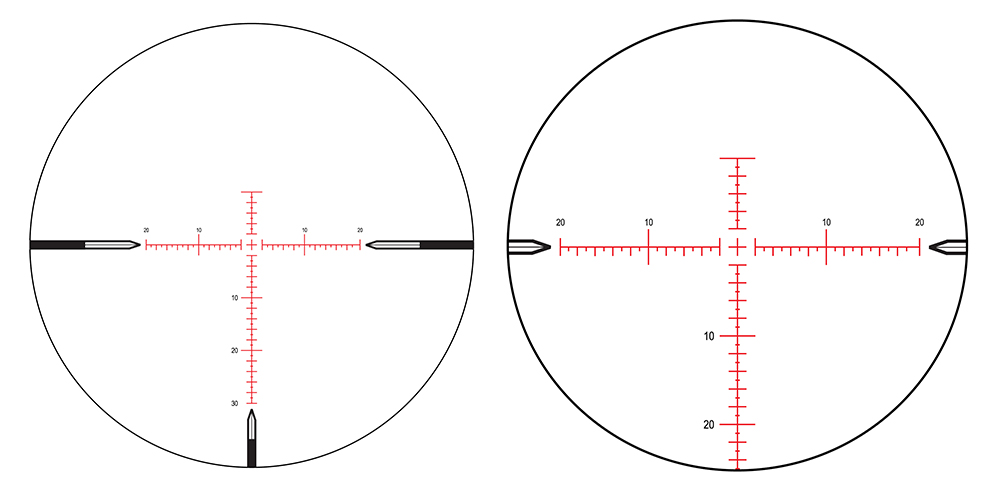
Another way to explain it, is the relationship between the target or animal and the reticle never changes. This is helpful if your reticle offers multiple aiming points for extended range because you can use those reference marks to compensate for holdover regardless of magnification.
The downside to the first focal plane reticle is that at low magnification, it appears very small — so small that you might not be able to see those extra aiming reference points. In fact, some first focal plane reticles get so small at low magnification that you can hardly see them at all.

A second focal plane reticle (above) will appear the same size no matter the magnification. Because of this when the magnification of the riflescope is changed, the relationship between the reticle and the target or animal changes. The upside is the reticle is always bold and easy to see because it stays the same size. The downside is that ballistic type reticles can only be used precisely if the riflescope is set to the highest magnification.
This might not seem like a big deal because if you are shooting far, you should have time to dial up the power. However, if you forget to adjust the magnification to maximum and attempt to use your ballistic reticle for a long shot, you’ll miss. This can easily happen in the heat of the moment.

Which reticle is best? There is not hard and fast answer. It mostly depends on how you intend to use the gun the riflescope is mounted on. If you are looking to set up a dedication long-range target rifle, then first focal plane is probably the way to go. If you’re putting together a common big game rifle, then the second focal plane reticle is probably the best idea. Shooting big game at stupid long distances has become the trendy thing, and if that’s what trips your trigger, then you might want to look at a riflescope with a reticle in the first focal plane.
I will add that correcting for long range by making adjustments with the elevation turret is infinitely more precise than using a reticle. If that’s your plan, then reticle position is just not all that important.
1. Vortex Viper HSLR 4-16x50mm Rifle Scope
The Vortex Viper HSLR 4-16x50mm Rifle Scope is a second-focal plane scope that has a bullet-drop reticle for long range shooting. The Viper an exposed target-style elevation turret built for dialing elevation at extended ranges. Viper HSLR riflescopes feature an advanced optical system highlighted with a 4x zoom range for magnification versatility. A forgiving eye box with increased eye relief gets shooters on target quickly and easily. Built on an ultra-strong 30mm one-piece machined aluminum tube for increased windage and elevation travel and optimal adjustment. These scopes were designed by hunters for hunters, so don’t be weary of taking this scope deep into the back country for an extreme hunt. It can take it.
Pros/Extreme clarity, accuracy and durability
Cons/None.
Bottom Line/A great option for a premium SFP scope
2. Burris Signature HD 5-25x50mm Rifle Scope
If you’re looking for a premium first focal plane scope without a premium price, the Burris Signature HD 5-25x50mm Rifle Scope is one you should seriously look at. For precision or long-range shooting, the 5-25×50 Signature HD version is built with a 30mm nitrogen-filled tube and is available with three different reticle options. Sporting the new Burris front focal plane, 6.5 Creedmoor illuminated reticle designed around the popular 140-grain ELD bullet. Quick holdover estimates for 6.5 Creedmoor are ideal for shooting or hunting when confidence and seconds matter. The thin crosshairs on the Fine Plex reticle are ideal for those looking for a simple and precise sight window. The optic is also available with a Ballistic E3™ Illuminated reticle. This version also includes side parallax focus and zero-stop turrets
Pros/Multiple options for different caliber and rifle combinations
Cons/None
Bottom Line/Perfect for long-range shooting and hunting situations.
3. Vortex Diamondback Tactical 4-16×44 Rifle Scope – EBR-2C
The Vortex Diamondback Tactical is designed for long-range shooters looking for quality glass with a FFP reticle, and a price that leaves room for ammo. Rather than cramming features in at the expense of turret performance and optical quality, the Diamondback Tactical dials it back, putting the focus where it counts. Exposed turrets bring tracking performance previously unheard of at this price point, while its optical system delivers sharp image quality even at extended range. Its relatively simple design places you firmly in the driver’s seat with the potential to take on that 1,000 yard mark and beyond, all at a price that’s easy to justify for new shooters, your training rifle, as well as experienced shooters looking for a back-to-basics optic on their fun gun. Opt for one of the first focal plane models on a sweet shooting rifle and you’ve got yourself a perfectly capable competition rig without breaking the bank.
Pros/Extreme value and accuracy
Cons/Less features
Bottom Line/For the money, an amazing FFP scope.
4. Leupold VX-3i 4.5-14×40 Rifle Scope
You can’t beat the legendary performance of a Leupold scope, and the Leupold VX-3i 4.5-14×40 Rifle Scope with a 30mm main tube, side focus and a SFP CDS-ZL reticle let you handle just about any shooting situation, all without breaking your bank account. This scope will help you reach out further without adding ounces. With a magnification range that’s great for any situation, you’re guaranteed to have the right tool for the job. And with a 30mm main tube, get the extra adjustment you need to make that long-range shot. This scope gives you what hunters want most – outstanding performance in low-light conditions and an incredibly tough, lightweight design. The VX-3i delivers this and more. Leupold’s Twilight Max Light Management System lets you see details others can’t in those crucial low-light situations at the beginning and the end of the day.
Pros/Feature packed and Leupold quality
Cons/None
Bottom Line/A great scope for the money.
We are committed to finding, researching, and recommending the best products. We earn commissions from purchases you make using the retail links in our product reviews. Learn more about how this works.
